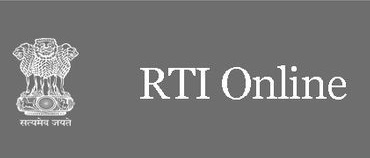- Air Quality Management
- Mandate
- National Air Monitoring programme
- Air quality data
- Graded Response Action Plan
- PAAC - EPC (Environment Protection Charge)
- AQMN Related Portals
- Clean Air Campaign
- Reports
- Publications
- Non Attainment cities /Million Plus Cities
- Source apportionment studies
- Delhi NCR - Old Vehicles List
- Air Quality Management in Delhi-NCR
- National Clean Air Programme
- Specification of Manual –PM 2.5 Sampler
- Specs of Manual PM2.5 Low Volume Sampler
- Water Quality Management
- Quality Assurance/Quality Control
- Waste Management
- Hazardous Waste
- E-Waste
- Municipal solid waste
- Bio Medical Waste
- Plastic Waste
- Rules
- Technical guidelines
- Annual Reports
- Information on Compostable and Biodegradable plastics
- Overview of Plastic Waste
- PWM Publications
- Directions issued
- Registration of Producers/Brand owners (PIBOs) under PWM Rules
- Withdrawl Notice of PRO registration
- Reports Submitted in Hon'ble NGT
- Single Use Plastic (SUP)
- Batteries Management
- Construction & Demolition waste
- Waste Management Technologies
- Used Oil EPR
- Contaminated Sites
- Industrial Pollution
- Pollution Control implementation
- CREP
- Critically Polluted Areas(CPAs)
- Common directions issued
- Monitoring of Industrial Discharge
- Fly Ash Management and Utilization
- Online Monitoring of Industrial Emission & Effluent
- Noise Pollution
- Urban Pollution
- Pollution Control Planning
- Information Technology
- Environmental Training
- NGT/Court Cases
- Public Relations
- Annual Reports
- Infrastructure Development
- Regional Directorates / Project Office
- Old Projects
- Research and Development
Central Pollution Control Board is executing a nation-wide programme of ambient air quality monitoring known as National Air Quality Monitoring Programme (NAMP). The network consists of 804 operating stations covering 344 cities/towns in 28 states and 6 Union Territories of the country.
The objectives of the N.A.M.P. are to determine status and trends of ambient air quality; to ascertain whether the prescribed ambient air quality standards are violated; to Identify Non-attainment Cities; to obtain the knowledge and understanding necessary for developing preventive and corrective measures and to understand the natural cleansing process undergoing in the environment through pollution dilution, dispersion, wind based movement, dry deposition, precipitation and chemical transformation of pollutants generated.
Under N.A.M.P., four air pollutants viz ., Sulphur Dioxide (SO2), Oxides of Nitrogen as NO2, Respirable Suspended Particulate Matter (RSPM / PM10) and Fine Particulate Matter (PM2.5) have been identified for regular monitoring at all the locations. The monitoring of meteorological parameters such as wind speed and wind direction, relative humidity (RH) and temperature were also integrated with the monitoring of air quality.
The monitoring of pollutants is carried out for 24 hours (4-hourly sampling for gaseous pollutants and 8-hourly sampling for particulate matter) with a frequency of twice a week, to have one hundred and four (104) observations in a year. The monitoring is being carried out with the help of Central Pollution Control Board; State Pollution Control Boards; Pollution Control Committees; National Environmental Engineering Research Institute (NEERI), Nagpur. CPCB co-ordinates with these agencies to ensure the uniformity, consistency of air quality data and provides technical and financial support to them for operating the monitoring stations. N.A.M.P. is being operated through various monitoring agencies. Large number of personnel and equipments are involved in the sampling, chemical analyses, data reporting etc. It increases the probability of variation and personnel biases reflecting in the data, hence it is pertinent to mention that these data be treated as indicative rather than absolute.


















